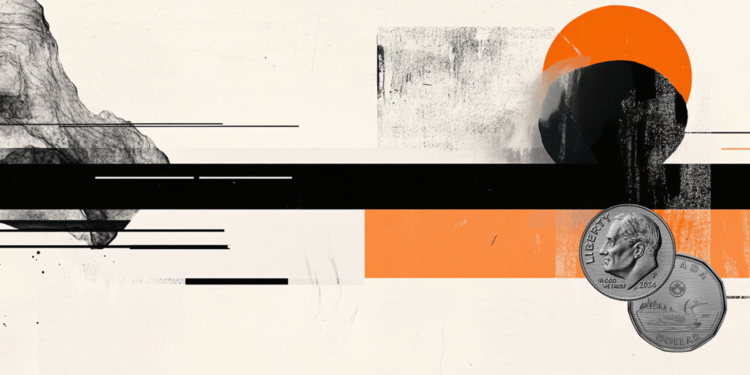- The Australian dollar gains ground thanks to the fall of the US dollar.
- Australia’s inflation slowed to 5.1% in September from 5.7% previously.
- The RBA is expected to raise interest rates by 25 basis points in its policy decision on Tuesday.
He Australian dollar (AUD) remains strong on Monday, aiming for three-month highs. The AUD/USD pair continues to gain ground for the fourth day in a row, preparing for the Reserve Bank of Australia’s (RBA) interest rate decision to be announced on Tuesday.
Australia’s central bank will announce its policy decision on Tuesday. Expectations are leaning towards a 25 basis point increase, a move in line with Australian inflation teetering on the edges, providing support to the Australian Dollar (AUD). Elsewhere, the RBA Shadow Board suggests an increase in the cash rate in November. Assigns a 62% probability of increasing the cash rate to a level above 4.10%.
The AUD/USD pair sees a further rise due to increased risk appetite. This sentiment is fueled by the possibility that the US Federal Reserve (Fed) has completed the tightening of its monetary policy, as indicated by cooling economic data from the United States (US).
The US Dollar Index (DXY) saw a significant drop of over 1.0% in the previous session. This decline was influenced by the decline in US Treasury yields, a reaction to the weaker-than-expected nonfarm payrolls released on Friday. Disappointing employment data helped moderate sentiment towards the US dollar (USD).
Daily summary of market movements: The Australian dollar advances thanks to the weakness of the Dollar and the decision of the RBA
- Australia’s TD Securities Inflation (YoY) fell to 5.1% in September from 5.7% previously.
- Australian retail sales improved to 0.2% in the third quarter from -0.6% previously.
- Australia’s trade balance (month-on-month) fell to 6,786 million in September, below expectations of 9,400 million and the previous figure of 10,161 million.
- In the twelve months to September 2023, Australia’s monthly Consumer Price Index (CPI) recorded an increase of 5.6%. However, the quarterly inflation rate fell to 5.4% year-on-year in the third quarter.
- The US Bureau of Labor Statistics recently released Nonfarm Payrolls (NFP) data for October, with a figure of 150,000 jobs. The expected 180,000 were not reached, which represents a significant drop compared to the 297,000 in September.
- US average hourly earnings (mom) fell to 0.2%, missing the 0.3% forecast. In year-on-year terms, it stood at 4.1%, exceeding expectations of 4.0%.
- The Purchasing Managers’ Index (PMI) for the US services sector fell from 53.6 to 51.8 points. Additionally, on Thursday, the US Department of Labor released the count of initial jobless claims for the week ending October 27, showing an increase from 212,000 to 217,000.
Technical Analysis: Australian Dollar remains above the main 0.6500 level awaiting RBA decision
The Australian Dollar hovers around 0.6510 near the resistance zone at the 38.2% Fibonacci retracement level aligned with the September high at 0.6521, followed by the main level of 0.6550. On the downside, the seven-day EMA at 0.6436 could act as immediate support after the yearly low at 0.6270.
AUD/USD: Daily Chart

Current quote of the Australian dollar
Below is the percentage change of the Australian Dollar (AUD) against the currencies listed today. The Australian dollar was the strongest currency against the US dollar.
| USD | EUR | GBP | CAD | AUD | JPY | NZD | CHF | |
| USD | -0.20% | -0.35% | -0.22% | -0.03% | 0.00% | -0.04% | -0.35% | |
| EUR | 0.19% | -0.15% | -0.02% | 0.15% | 0.21% | 0.15% | -0.17% | |
| GBP | 0.35% | 0.15% | 0.13% | 0.31% | 0.33% | 0.30% | -0.01% | |
| CAD | 0.21% | 0.02% | -0.11% | 0.22% | 0.20% | 0.17% | -0.15% | |
| AUD | 0.03% | -0.16% | -0.31% | -0.18% | 0.03% | 0.03% | -0.32% | |
| JPY | 0.00% | -0.19% | -0.56% | -0.19% | 0.01% | -0.05% | -0.36% | |
| NZD | 0.04% | -0.19% | -0.30% | -0.16% | 0.00% | 0.04% | -0.31% | |
| CHF | 0.35% | 0.16% | 0.01% | 0.14% | 0.31% | 0.35% | 0.35% |
The map shows the percentage changes of the major currencies against each other. The base currency is chosen in the left column, while the quote currency is chosen in the top row. For example, if you choose the Euro in the left column and scroll down the horizontal line to the Japanese Yen, the percentage change that appears in the box will represent EUR (base)/JPY (quote).
economic indicator
Australia RBA Interest Rate Decision
The RBA interest rate decision is announced by the Reserve Bank of Australia. If the RBA takes a hawkish view on the economy’s inflationary outlook and raises interest rates it is positive, or bullish, for the AUD. Similarly, if the RBA has a dovish view on the Australian economy and keeps the interest rate on course, or cuts the interest rate it is seen as negative, or bearish.
Source: Fx Street
I am Joshua Winder, a senior-level journalist and editor at World Stock Market. I specialize in covering news related to the stock market and economic trends. With more than 8 years of experience in this field, I have become an expert in financial reporting.







